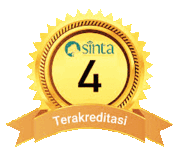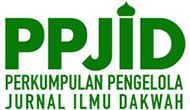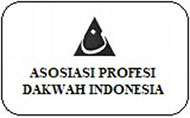Upper Middle-Class Muslims and Market-Oriented Umroh Program Dissemination on Social Media
Abstract
The emergence of upper middle-class Muslims in Indonesia does display not only religious piety on the one hand but also new consumption patterns on the other. This change in new consumption patterns simultaneously influences Islamic business people to manage their business activities in new ways oriented to market logic. This article discusses the market-based Umroh program in contemporary Indonesia. Based on nethnographic work on social media, this study found that the Umroh business captures economic opportunities from the identity and lifestyle of upper-middle-class Muslims. For middle and upper-class Muslims in Indonesia, pilgrimage to the holy land is a matter of worship and an experience to enjoy other countries, which are their modern identities. Umroh businesses capture this Islamic expression to provide umroh services and tours to visit countries in Asia, Europe, and the Middle East. In addition, this Umroh program is massively distributed through their social media channels.
Keywords
Full Text:
PDFReferences
Aeni, N., & Nuriyanto, L. K. (2020). Religiusitas Kelas Menengah Muslim Surakarta (Interaksi dengan Globalisasi dan Modernitas). Harmoni: Jurnal Multikultural & Multireligius, 19(2), 232–251.
Aisyah, L., & Romario, R. (2020). @wardahmaulina_: Platform Islami Media Sosial Dari Niqab Eksklusif Pada Niqab Fashion. Jurnal Kajian Interdisipliner, 5(1), 205–222.
Akmal, A., Ikhsan, Muh., Prio Utomo, A., & Muslim, A. (2022). Consumption and Piety: Raising the Curtain on the Islamization of Taste and Fashion in Kendari’s Muslim Middle Class. KnE Social Sciences, 421–428. https://doi.org/10.18502/kss.v7i8.10761
Alam, L. (2018). Popular Piety and the Muslim Middle Class Bourgeoise in Indonesia. Al Albab, 7(2), 237–248.
APJII. (2022). Profil Internet Indonesia 2022.
Basahel, S., Alsabban, A., & Yamin, M. (2021). Hajj and Umrah Management During COVID-19. International Journal of Information Technology (Singapore), 13(6), 2491–2495. https://doi.org/10.1007/s41870-021-00812-w
Campbell, H. A. (2013). Digital Religion: Understanding Religious Practice in New Media World. Routledge.
Casanova, J. (1994). Public Religions in the Modern World. University of Chicago Press.
Cresswell, J. W. (2013). Qualitative Inquiry and Research Design: Choosing Among Five Approaches (3rd ed.). SAGE Publications.
Darojatun, R. (2018). Tren Produk Halal, Gaya Hidup Syar’i dan Kesalehan Simbolik: Studi Tentang Muslim Kelas Menengah. Wardah, 19(2), 135–157. https://www.kompasiana.com/www.inatanaya.com/5a4b658af133442d861788a2/harmoni-gaya-hidup-
Fealy, G., & White, S. (2008). Expressing Islam: Religious Life and Politics in Indonesia. ISEAS Publishing. http://viewer.igpublish.com/viewer/service/861001101121209080120...
Hasan, N. (2009). The Making of Public Islam: Piety, Agency, and Commodification on the Landscape of the Indonesian Public Sphere. Contemporary Islam, 3(3), 229–250. https://doi.org/10.1007/s11562-009-0096-9
Heryanto, A. (1999). The Years of Living Luxuriosly: Identity Politics of Indonesia’s New Rich. In M. Pinches (Ed.), Culture and Privilege in Capitalist Asi (pp. 160–188). Routledge.
Husein, F., & Slama, M. (2018). Online Piety and Its Discontent: Revisiting Islamic Anxieties on Indonesian Social Media. Indonesia and the Malay World, 46(134), 80–93. https://doi.org/10.1080/13639811.2018.1415056
Ilias, nur S., Azmi, M. A. Mohd., & Nor, K. N. M. (2022). Development of Mobile Applications for Monitoring and Managing Hajj and Umrah Pilgrimage. In A. Ismail, W. M. Dahalan, & A. Öchsner (Eds.), Advanced Materials and Engineering Technologies (Vol. 162, pp. 233–244). Springer International Publishing. https://doi.org/10.1007/978-3-030-92964-0
Jati, W. R. (2015). Islam Populer Sebagai Pencarian Identitas Muslim Kelas Menengah Indonesia. Teosofi: Jurnal Tasawuf Dan Pemikiran Islam, 5(1), 139–163.
Kitiarsa, P. (2008). Introduction: Asia’s Commodified Sacred Canopies. In P. Kitiarsa (Ed.), Religious Commodifications in Asia: Marketing Gods (pp. 1–12). Routledge.
Kozinets, R. V. (2010). Netnography: Doing Ethnographic Research Online. SAGE Publications.
Lesmana, M., Nabila, F., Husni, I. S., & Fajriati, I. F. (2022). Studi Literatur: Manajemen Pembinaan Jamaah Haji dan Umrah Melalui Kementrian Agama Indonesia Pada Masa Pandemi Covid-19. Multazam: Jurnal Manajemen Haji Dan Umrah, 2(2), 138–150. http://e-journal.metrouniv.ac.id/index.php/
Luik, J. (2020). Media Baru: Sebuah Pengantar. Kencana.
Marshall, C., & Rossman, G. B. (2016). Designing Qualitative Research (6th ed.). SAGE Publications.
Nisa, E. F. (2018). Creative and Lucrative Da’wa: The Visual Culture of Instagram amongst Female Muslim Youth in Indonesia. Asiascape: Digital Asia, 5(1–2), 68–89. https://doi.org/10.1163/22142312-12340085
Norris, Pippa, Inglehart, & Ronald. (2011). Sacred and Secular: Religion and Politics Worldwide (2nd ed.). Cambridge University Press.
Pribadi, Y., & Ghufron, Z. (2019). Komodifikasi Islam dalam Ekonomi Pasar: Studi Tentang Muslim Perkotaan di Banten. Afkaruna, 15(1), 82–112. https://doi.org/10.18196/aiijis.2019.0096.82-112
Qodir, Z., & Nashir, H. (2019). Forming Muslim Middle Class’ Piety and Identity in Yogyakarta. Atlantis Press, 353, 352–357.
Rakhmani, I. (2016). Mainstreaming Islam in Indonesia: Television, Identity, and the Middle Class. In Mainstreaming Islam in Indonesia: Television, Identity, and the Middle Class. Palgrave Macmillan. https://doi.org/10.1057/978-1-137-54880-1
Rasyid, T., & Adwik, S. (2019). IslamIc Tourism and Use of Social Media. In A. Jamal, R. Raj, & K. Griffin (Eds.), Islamic Tourism: Management of Travel Destinations (pp. 68–77). CABI.
Rofie, M. K. H., Mahmad, M. A., Ismail, N. H., & Ahmad, S. (2021). Management of Umrah Package Operations: An Analysis of Umrah Operating Companies Experience. Central Asia and the Caucasus, 22(5), 60–65. https://doi.org/10.37178/ca-c.21.5.07
Saputra, E. (2019). Kaos Dakwah: Discourse of Piety, Market Islam, and Islamic Ideology. Penamas, 32(1), 519–538. https://doi.org/10.31330/penamas.v32i1.297
Thimm, V. (2017). Commercialising Islam in Malaysia: “Ziarah” at the Intersection of Muslim Pilgrimage and the Market-driven Tourism Industry. Institute Kajian Etnik, University Kebangsaan Malaysia.
Thimm, V. (2018). Embodying and Consuming Modernity on Muslim Pilgrimage: Gendered Shopping and Clothing Practices by Malaysian Women on “Umrah and Ziarah Dubai.” Asian Anthropology, 17(3), 185–203. https://doi.org/10.1080/1683478X.2018.1483477
Triantoro, D. A. (2020). Pebisnis Islam dan Muslim Kelas Menengah ke Atas di Indonesia: Kesalehan, Gaya Hidup, dan Pasar. El Madani: Jurnal Dakwah Dan Komunikasi Islam, 1(2), 79–104.
Triantoro, D. A., Husna, F., & Amna, A. (2018). Ruqyah Syar’iyyah: Alternatif Pengobatan, Kesalehan, Islamisme dan Pasar Islam. Harmoni: Jurnal Multikultural & Multireligius, 17(2), 460–478. https://rehabhati.com/
Turner, B. S. (2010). Islam, Public Religions and the Secularization Debate. In G. Marranci (Ed.), Muslim Societies and the Challenge of Secularization: An Interdisciplinary Approach (pp. 11–30). Springer. http://www.springer.com/series/7863
Weng, H. W. (2018). The Art of Dakwah: Social Media, Visual Persuasion and the Islamist Propagation of Felix Siauw. Indonesia and the Malay World, 46(134), 61–79. https://doi.org/10.1080/13639811.2018.1416757
Wilson, B. R. (2016). Religion in Secular Society (S. Bruce, Ed.). Oxford University Press.
DOI: http://dx.doi.org/10.24014/idarotuna.v5i1.22298
Refbacks
- There are currently no refbacks.

This work is licensed under a Creative Commons Attribution 4.0 International License.
Indexed by:
Editorial Office:
2nd Floor, Building of Da'wah and Communication Faculty, UIN Sultan Syarif Kasim Riau. Jl. HR Soebrantas Km 15, Simpangbaru, Tampan, Pekanbaru
Email : jurnal.idarotuna@uin-suska.ac.id

Jurnal Idarotuna is licensed under a Creative Commons Attribution-ShareAlike 4.0 International License.













